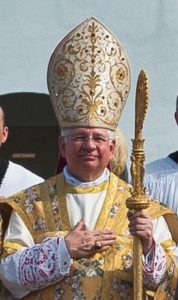
Most Rev. Daniel L. Dolan
NOVEMBER 30, 2018, the Feast of St. Andrew the Apostle, marked the 25th anniversary of the episcopal consecration of the Most. Rev. Daniel L. Dolan by the Most Rev. Mark A. Pivarunas. We observed the happy occasion at St. Gertrude the Great Church in West Chester, Ohio, with a splendid Pontifical High Mass celebrated by Bishop Dolan and attended by a dozen priests and two bishops.
The story of how his consecration came to pass, however, is worth telling once again as we celebrate this event.
Our Search for a Bishop
Well before 1993, the year of the consecration, the situation looked bleak for the apostolate of former members of the Society of St. Pius X like me. Archbishop Marcel Lefebvre had expelled nine of us from SSPX in 1983 because we opposed his step-by-step program to “reconcile” his organization (even then!) with the heretics in the Vatican, and with the chief heretic of them all, John Paul II. Readers who are unfamiliar with the history of this crisis can consult the then-Father Donald Sanborn’s 1984 article, The Crux of the Matter and my own extensive account of the events, The Nine vs. Lefebvre.
Because Our Lord established the sacraments as the principal ordinary means of salvation for Catholics and since most sacraments require priests to confer them, the question of finding a bishop to ordain future priests for our group weighed heavily on our minds. Virtually every bishop in the world had embraced the religion of Vatican II. The few prelates who were worried about the Council’s effects would not take a public position by ordaining priests, we suspected — still less, by consecrating a bishop.
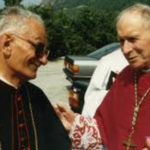
De Castro-Mayer with Lefebvre
Nevertheless, we charged on, contacting a retired South American bishop and a retired American bishop who had belonged to an Italian missionary order. Fr. Sanborn spearheaded the effort. He met with Bp. Alfred E. Mendez, the former bishop of Arecibo, Puerto Rico (who in 1993 would in fact secretly consecrate a bishop for the SSPV). We rejected Bp. Mendez because he told Fr. Sanborn he wanted to draw all traditionalists into a sort of “ordinariate” under John Paul II — to become part of the heretical V2 religion under its false popes, in other words. (More facts about Bp. Mendez’s unsuitability would come to light later.)
Fr. Sanborn travelled to Campos, Brazil, to meet with Bishop Antonio de Castro-Mayer to ask him to ordain for us. Bp. de Castro-Mayer, though more of a hard-liner than Abp. Lefebvre, was not a sedevacantist then (he would become one later), so he declined. But he told Fr. Sanborn to “Go to Guérard” — Guérard des Lauriers, a Dominican theologian and one of our former professors at Ecône who had been consecrated a bishop in 1981 by Abp. Pierre-Martin Ngo-dinh-Thuc, former archbishop of Hué, Vietnam. Since Guérard was a theologian, Bp. de Castro-Mayer continued, one could be certain that his consecration was valid.

Mgr. Guérard des Lauriers OP
This surprised Fr. Sanborn, because there had been number of controversies concerning Abp. Thuc’s consecrations that had led us discount them as a viable option.
But based on Bp. de Castro-Mayer’s recommendation, we decide to revisit the issue and conducted an extensive investigation, the story of which I told in a post and video, Abp. Thuc: A Conversation with Fr. Cekada. Eight of the original twelve Society of St. Pius V priests would eventually accept the validity of the consecrations.
How Bp. Dolan’s Consecration Came About
In 1989, after our departure from SSPV, Fr. Dolan and I encountered a number of devout traditional Catholic laymen connected with the Congregation of Mary Immaculate Queen (CMRI), headquartered at Mount St. Michael, a former Jesuit seminary in Spokane WA. CMRI priests derived their orders from Abp. Thuc (whose consecrations we then regarded as unquestionably valid), and subsequent discussion with the Fathers revealed agreement on major theological issues, notably, the new sacraments and the vacancy of the Holy See.
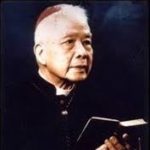
Abp. Ng0-dinh-Thuc
In 1991, Bishop Moises Carmona, head of the Mexican traditionalist organization Trento, asked the 12 CMRI priests to elect one of their number to receive episcopal consecration. Bp. Carmona, a respected pastor and former seminary professor in Acapulco, had himself (like Bp. Guérard des Lauriers) been consecrated a bishop in 1981 by Abp. Thuc.
The CMRI fathers selected Fr. Mark A. Pivarunas, whom Bishop Carmona then duly consecrated. While we were unable to attend the consecration ourselves, I was able to provide some help on rubrical matters in preparation for the extremely complicated ceremony. We were pleased to have Bp. Pivarunas confer confirmations at the old St. Gertrude’s in Sharonville, Ohio. It was a very happy day, because it was first opportunity our faithful had to receive the sacrament since our expulsion from SSPX in the early 1980s.
Since Fr. Dolan not only knew the ex-SSPX milieu in Europe and the States, but was also fluent in French and Spanish, Bp. Pivarunas asked Fr. Dolan to accompany him on his visits to Mexico, France, Belgium and Italy.
In 1992, with a view towards assisting clergy formerly belonging to SSPX, as well as Spanish- and French-speaking traditionalists, Bp. Pivarunas asked Fr. Dolan to receive episcopal consecration. After considerable hesitation, Fr. Dolan agreed in mid-1993.
It was a bold and controversial move for Bp. Pivarunas to make, and an equally bold and controversial proposition for Fr. Dolan to accept. On Bp. Pivarunas’ part, many in CMRI circles were opposed to having anything to do with Lefebvrists, even former ones like ourselves, not only because they regarded us as sell-outs, but also because they questioned the validity of Lefebvre’s ordinations. On Fr. Dolan’s part, many in the former SSPX milieu regarded CMRI as disreputable, or (like the four-priest rump of the SSPV under Fr. Clarence Kelly) continued to raise theologically ignorant objections to Abp. Thuc’s consecrations.
But as subsequent events would prove, both Bp. Pivarunas and the then-Father Dolan had an enormous amount of foresight into the good that could be done in the long run for traditional Catholics.
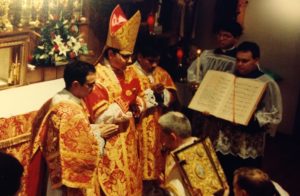
Bp. Pivaruras at the 1993 consecration.
The November 1993 Consecration
And so, on November 30, 1993, the Feast of St. Andrew the Apostle, during Pontifical High Mass, Bp. Mark A. Pivarunas consecrated Fr. Daniel L. Dolan a bishop during Pontifical High Mass. The rite took three hours, and all the solemnities of the Pontificale Romanum were observed. We took especial care to see that the ceremony was as solemn, splendid and public as possible.A professionally-produced DVD of the consecration is still available.
Seventeen traditional Catholic priests from the U.S., Mexico and Canada participated in the ceremony, along with several hundred Catholics from various parts of the country. Among the latter was a fifteen-year-old high school boy from Michigan, Joseph Selway, who then aspired to the priesthood and who, twenty-five years later, would be consecrated a bishop, with Bp. Dolan serving as one of his co-consecrators.
Bp. Dolan’s consecration made it possible for us to begin forming young men for the priesthood once again. So, in September, 1995, Fr. Sanborn, former Rector of the SSPX seminary in the U.S., founded Most Holy Trinity Seminary in Warren, Michigan, from which it would later move to Brooksville FL, north of Tampa. I joined Fr. Sanborn that year as part-time professor of liturgy and canon law, in between my duties in Cincinnati and the missions we served.
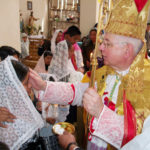
Confirmation in Mexico
Bp. Dolan’s Apostolate
From this beginning, Bp. Dolan’s work eventually spread throughout the world. As a young priest in SSPX, he was an indefatigable traveller when it came to bringing the faith and valid sacraments to Catholics far and wide in the U.S. In SSPX alone, he founded thirty-five chapels and missions before his expulsion with the rest of “The Nine” (as we were called) in April 1983.
As a bishop, he would continue that missionary zeal by assisting faithful Catholics not only in the United States, but in countries throughout the world.
While the average layman who assists at Mass at a sedevacantist chapel may think he is — unlike a parishioner in the Borg-like SSPX Reich — isolated and unconnected with like-minded Catholics elsewhere, this is not necessarily the case, thanks to Bp. Dolan’s work.
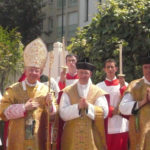
Ordination in France
In the bigger picture, though he eschewed founding any grand organization, Bp. Dolan’s cooperative spirit in the apostolate has allowed numerous sedevacantist groups throughout the world to work together — in America, Canada, Mexico, Brazil, Argentina, England, France, Belgium, Italy, Germany, Austria, Hungary, Poland, Ukraine, Australia and Nigeria.
(The closing titles in the linked video of the anniversary Pontifical Mass on this page contains an array of photos, taken over the past twenty-five years, showing Bp. Dolan’s ministrations to faithful Catholics in various parts of the world.)
Bp. Sanborn’s Anniversary Sermon
This was a main point in Bp. Donald Sanborn’s sermon at Bp. Dolan’s twenty-fifth anniversary. He also pointed out that, even as an SSPX seminarian at Ecône in the early 1970s, the young Daniel Dolan was responsible for educating many of us on issues such as the false pope, the invalidity of the Vatican II sacraments, and the dangers of the 1950s liturgical reforms. It was amazing to hear Bp. Sanborn remind us of the many times Bp. Dolan had led others to a correct and coherent resolution of some difficult question Catholics faced in the post-Vatican II era.
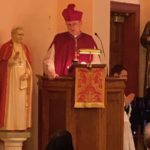 Bp. Sanborn also spoke in amazement about how Bp. Dolan never repeats a sermon. They’re all freshly prepared, often begun on the Monday before. Over 42 years, that adds up to about 2700 major (Sunday and Holy Day) sermons about 6500 minor (weekday) sermons — a total of 9200.
Bp. Sanborn also spoke in amazement about how Bp. Dolan never repeats a sermon. They’re all freshly prepared, often begun on the Monday before. Over 42 years, that adds up to about 2700 major (Sunday and Holy Day) sermons about 6500 minor (weekday) sermons — a total of 9200.
I highly recommend that readers listen to Bp. Sanborn’s sermon in full. It not recounts events in Bp. Dolan’s long and fruitful apostolate, but also provides a coherent overview, both historical and theological, of the motives and mode for our resistance to the Vatican II religion in all its forms. As such, it is invaluable for newcomers to the traditionalist movement, as well as for our younger generation, who may not be familiar with background to our work.
Listen to Bp. Sanborn’s sermon here.
Pontifical Mass and Music
The centerpiece of the anniversary celebration was Pontifical High Mass. The St. Gertrude the Great Choir, under the direction of Joan Lotarski and accompanied by parish organist Andrew Richesson, sang splendidly for the occasion. The music included the festive processional Veni Sancte Spiritus, which was my own composition; the Mass of St. Gregory the Great by Andrew Richesson; the Credo from the Salve Regina Preis-Messe by the 19th century Caecilian Movement composer J.G. Stehle; Renaissance composer G. Asola’s Decantabant Populus as the second Offertory motet; Grigor Aichinger’s O Sacrum Convivium during Communion, and as the organ postlude, J.S. Bach’s dazzling “Dorian” Toccata, expertly performed by Mr. Richesson.
So too, the St. Gertrude the Great Schola under the direction of Charles Simpson, which chanted the calm and etherial Gregorian Propers of the Mass of St. Andrew.
A Specially Composed Motet
The musical high point came with the first Offertory motet, a new musical work our young Mr. Richesson composed especially for this occasion and based on Bp. Dolan’s episcopal motto Zelus Domus Tuae — “Zeal for thy house.” Twenty-five years ago, Bp. Dolan had selected the phrase, taken from Psalm 68, as an allusion to his desire to preserve the traditional Catholic liturgy in all its fulness and splendor. The translation of the full text of Mr. Richesson’s motet reads:
Zeal for thy house hath consumed me… For I am poor and sorrowful: thy salvation, O God, hath set me up. So I will praise the name of God with a canticle: and I will magnify him with praise. — Psalm 68:10, 30-31
The Latin text of the Psalm, by the way, contains a felicitous pun on the bishop’s last name: quia ego sum… dolens.
A Joyous Reception
A joyous reception followed in Helfta Hall, our church social hall, named after the monastery where our patroness, St. Gertrude the Great, had been abbess.
Our parish is known for the frequency of its parties, usually connected with some significant liturgical observance. A team of women and young ladies from the parish worked for weeks planning the reception and decorations. An array of hot and cold hors d’oeuvres and beverages were spread out at stations throughout the hall, and a group of young parishioners served as waiters.
A string quartet, assembled by Lou Proske, the violinist from the Dayton Symphony Orchestra who has been providing music for our Christmas morning Mass for more than thirty-five years, played a selection of classical music during the reception.
This provided a good opportunity for us to hear yet another musical piece written by our resident composer, Mr. Richesson, his Sonata in D for string quartet.
The gathering included faithful from various parts of the country, many of whom had known Bp. Dolan from the first years of his priestly missionary apostolate in the late 1970s.
All told, Bp. Dolan’s 25th anniversary celebration was a memorable event to commemorate the considerable and lasting accomplishments of a memorable apostolate.
Our wish for Bp. Dolan is the same wish the new bishop thrice chants to his consecrator at the end of the traditional Rite of Episcopal Consecration: Ad multos annos — May you enjoy many more years!